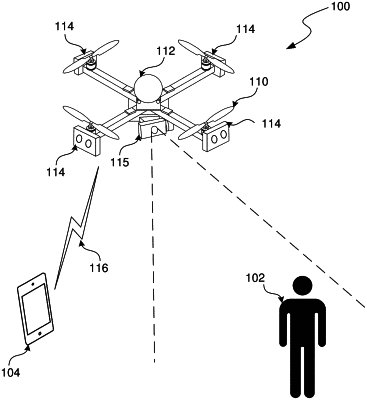| CPC G05D 1/042 (2013.01) [B64C 39/024 (2013.01); G06N 20/00 (2019.01); B64U 70/00 (2023.01); B64U 2201/10 (2023.01)] | 20 Claims |

|
1. An apparatus comprising:
one or more non-transitory computer readable storage media having program instructions stored thereon that, when executed by a processor, direct the processor to:
responsive to initiation of a landing sequence, generate a first control command configured to cause a propulsion system of an aerial vehicle to reduce thrust to land on a physical surface in a physical environment;
continually estimate, based on perception inputs, external forces acting on the aerial vehicle during the landing sequence,
wherein the perception inputs do not include data output by a tactile force sensor;
determine, based on the estimated external forces, that the aerial vehicle is in contact with the physical surface;
responsive to determining that the aerial vehicle is in contact with the physical surface, generate a second control command configured to cause the aerial vehicle to further reduce thrust;
determine, based on the estimated external forces, that the aerial vehicle is supported by the physical surface; and
responsive to determining that the aerial vehicle is supported by the physical surface, generate a third control command configured to cause the propulsion system to power down.
|